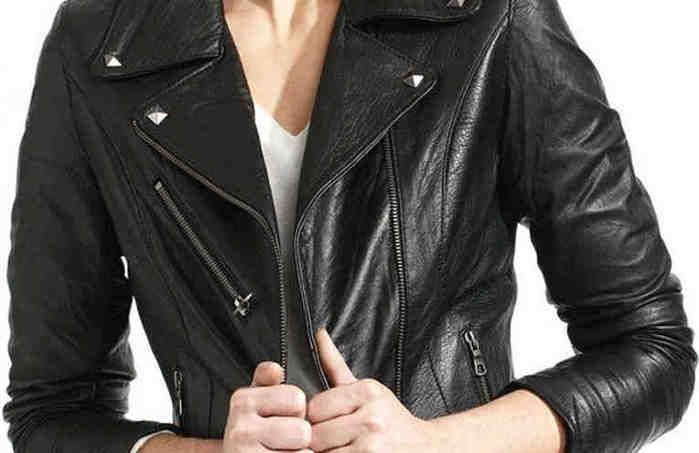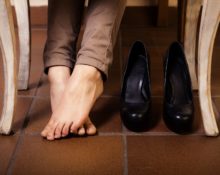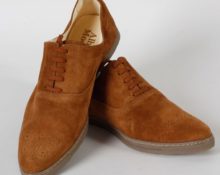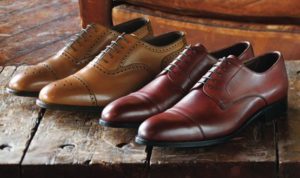 There are enough reasons to choose genuine leather products. The quality of the material directly determines the wear rate of the shoes, their comfort during wearing and their presentability.
There are enough reasons to choose genuine leather products. The quality of the material directly determines the wear rate of the shoes, their comfort during wearing and their presentability.
In addition, after a hard day in new boots, you don’t have to worry about an unpleasant odor, since genuine leather is highly breathable and allows your feet to “breathe.”
In pursuit of cheapness and mass supply, manufacturers are increasingly replacing natural materials with synthetic ones. Nowadays you can stumble upon leatherette among almost any type of product, and it is becoming increasingly difficult to determine authenticity. Many of us are accustomed to focusing on the smells emanating from shoes, hoping in this way to determine the material from which they were made. However, in the era of modern technology and fragrance substitutes, this method is not the most reliable.
4 ways to distinguish leather shoes from artificial leather
Heat transfer
The higher the heat inside the shoes, the higher the humidity.It is for this reason that a pressure difference appears, which allows excess moisture to be pushed out and your feet not to sweat.
Synthetically made leather has very little breathability and practically does not remove moisture. You can notice this if you hold the shoes in your hands for a while - the leather will heat up very quickly from the warmth of your hands and will maintain the temperature for some time, while leatherette will take longer to do so. In addition, synthetic leather will even feel cold and artificial to the touch.
Smell
Undoubtedly, manufacturers have learned to fake even this outstanding property of genuine leather. But this method is not very common, and such a check will take very little time. Leatherette is most often created using chemical impurities that are easily noticeable by smell. The skin has its own unique, pleasant smell, which does not hurt the sense of smell and is felt well.
Elasticity
One of the serious disadvantages of shoes made of leatherette is that after a short period of wear, the surface of the product becomes covered with small cracks, folds and scars. If you bend a piece of leather, it will quickly return to its original shape without damaging the area.
Porosity
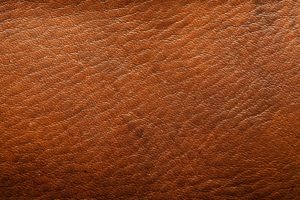 The pores on a leather product are distributed chaotically, and the pattern made up of them is unique and imperfect. It is these pores that allow the material to allow moisture and air to pass through. In the case of synthetic leather, its surface is often either covered with uniform “holes”, which clearly indicate the artificiality of their nature, or there are no pores on it at all.
The pores on a leather product are distributed chaotically, and the pattern made up of them is unique and imperfect. It is these pores that allow the material to allow moisture and air to pass through. In the case of synthetic leather, its surface is often either covered with uniform “holes”, which clearly indicate the artificiality of their nature, or there are no pores on it at all.
IMPORTANT! Sometimes manufacturers of artificial leather shoes create a special, uneven pattern of pores on its surface, so this method, like the others, is recommended to be used in conjunction with others.
Testing methods at home
What to do if the shoes have already been purchased, and you still doubt the material from which they were made?
There are at least two ways that you can do at home and determine whether you got genuine leather or not.
Exposure to water
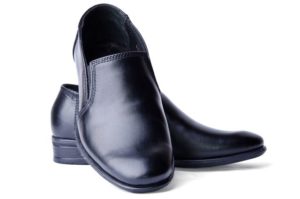 As mentioned above, genuine leather has high breathability, which allows moisture to be well pushed out to the “outside” of the foot. This means that a small drop of water that falls on its surface should be absorbed very quickly, and the trace from it should disappear after a short time, when the moisture dries. In addition, droplets emerging from the reverse side will be uneven and large due to the inhomogeneity of the “holes”.
As mentioned above, genuine leather has high breathability, which allows moisture to be well pushed out to the “outside” of the foot. This means that a small drop of water that falls on its surface should be absorbed very quickly, and the trace from it should disappear after a short time, when the moisture dries. In addition, droplets emerging from the reverse side will be uneven and large due to the inhomogeneity of the “holes”.
How are things going with leatherettes? If the material has no pores at all, the drop will not be absorbed and, most likely, will simply roll down. This fact alone suggests that the legs will not only be uncomfortable, but also dangerous to health. After all, increased humidity and heat accelerate the development of diseases such as fungus.
Temperature effect
 As many people know, skin does not burn well. Of course, safety precautions and the conscientiousness of sellers do not allow setting fire to shoes right in the store. But, if you want to conduct such an experiment at home, bring an open flame source to the area of the shoe for a short time and check what the effect will be.
As many people know, skin does not burn well. Of course, safety precautions and the conscientiousness of sellers do not allow setting fire to shoes right in the store. But, if you want to conduct such an experiment at home, bring an open flame source to the area of the shoe for a short time and check what the effect will be.
If the surface begins to melt instantly, you have got leatherette. The test can be carried out on a label (material sample) if you are afraid of damaging the product.
IMPORTANT! Follow safety guidelines when performing flame tests and do not keep it near the surface for too long.
Having studied and applied such simple but at the same time effective tips in the future, it is much easier to determine what shoes are made of and decide for yourself whether it is worth buying them.


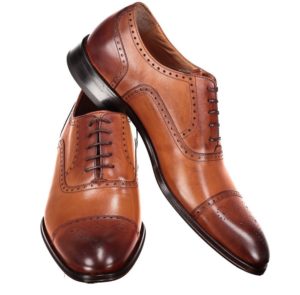
 0
0
